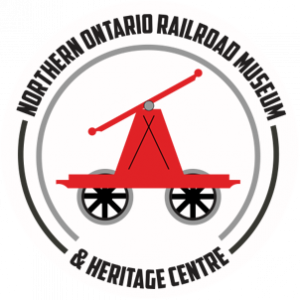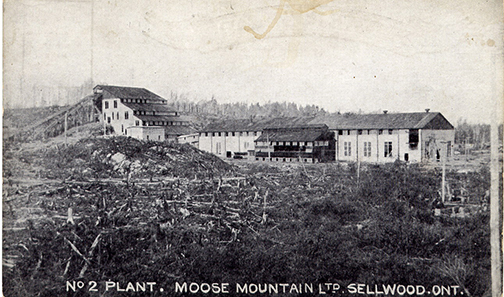Sellwood’s history begins in the early 1890s and the discovery of iron ore at Moose Mountain. The Moose Mountain Mining Company was established by 1901 work began to establish the mine and town site. The mine opened in 1906 and by 1908, 300 men were employed. Additional work in Sellwood could also be found at the Warren Lumber Company, which opened its sawmill around 1910.
The town soon became the northern terminal of the Canadian Northern Railway by 1908 and trains serviced Sellwood daily. There was a roundhouse for the steam locomotives, a railway station and waiting room. The town boasted a number of stores, post-office, poolrooms, hotels boarding houses and a Chinese laundry. A two-room school house was also constructed which also served as a place of worship.
By the fall of 1920, the Moose Mountain Mine shut down for good, and the lumber camps followed not long afterwards. Residents began leaving the community, many of whom left their belongings thinking that the closure would be short-lived. The mine would never re-open and the last family left Sellwood in 1924.
Two company men were hired to guard against vandalism where they remained until the late 1950s. Eventually the houses were bulldozed and all that remains are several small grave sites.
In 1959, the mine was reopened as Lowphos Ore Ltd. and the mine was renamed Moose Mountain Mine. The iron was removed by open pit method rather than by tunneling and sunken shafts. The company later changed its name to National Steel, and in 1979 the mine closed due to the declining demand for iron ore. Approximately 170 workers who lived in Capreol were affected by the closure.
Today the site is off-limits and closed to the public. There is little physical evidence of the original town site with the exception of some of the building foundations.
An interesting geological note is that Moose Mountain is outside the Sudbury Basin in a totally unrelated geological formation.


Recent Comments